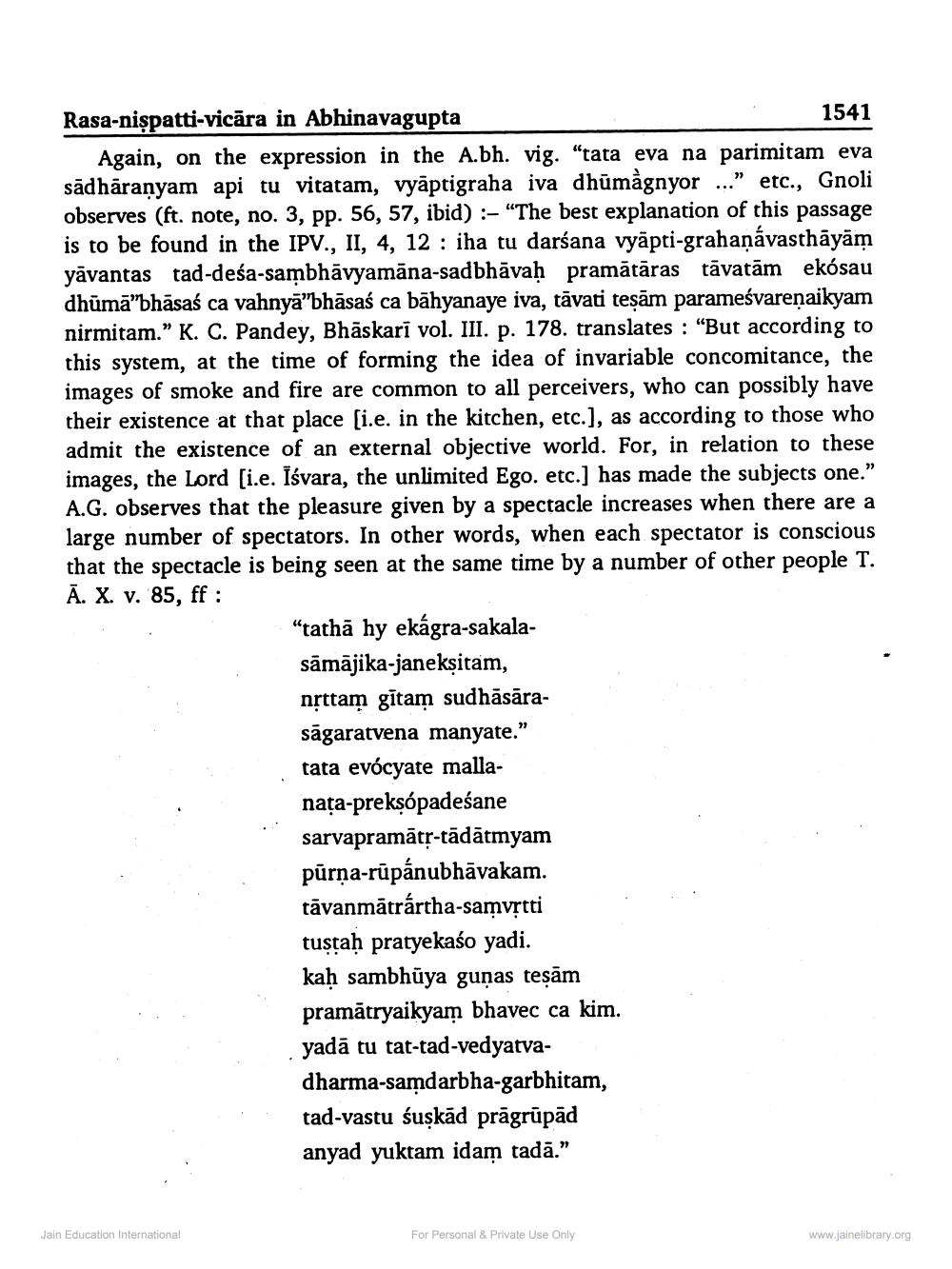________________
Rasa-nispatti-vicāra in Abhinavagupta
1541 Again, on the expression in the A.bh. vig. "tata eva na parimitam eva sādhāranyam api tu vitatam, vyāptigraha iva dhūmàgnyor ..." etc., Gnoli observes (ft. note, no. 3, pp. 56, 57, ibid) :-“The best explanation of this passage is to be found in the IPV., II, 4, 12 : iha tu darśana vyāpti-grahaņávasthāyām yāvantas tad-deśa-sambhāvyamāna-sadbhāvah pramātāras tāvatām ekósau dhūmā”bhāsaś ca vahnyā”bhāsaś ca bāhyanaye iva, tāvati tesām parameśvarenaikyam nirmitam.” K. C. Pandey, Bhāskari vol. III. p. 178. translates : “But according to this system, at the time of forming the idea of invariable concomitance, the images of smoke and fire are common to all perceivers, who can possibly have their existence at that place (i.e. in the kitchen, etc.), as according to those who admit the existence of an external objective world. For, in relation to these images, the Lord [i.e. Iśvara, the unlimited Ego. etc.] has made the subjects one.” A.G. observes that the pleasure given by a spectacle increases when there are a large number of spectators. In other words, when each spectator is conscious that the spectacle is being seen at the same time by a number of other people T. Ā. X. v. 85, ff :
"tathā hy ekágra-sakalasāmājika-janekşitam, nșttam gītam sudhāsārasāgaratvena manyate.” tata evócyate mallanața-preksópadeśane sarvapramātp-tādātmyam pūrņa-rūpánubhāvakam. tāvanmātrártha-samvrtti tustah pratyekaśo yadi. kaḥ sambhūya guņas teșām pramātryaikyam bhavec ca kim. yadā tu tat-tad-vedyatvadharma-samdarbha-garbhitam, tad-vastu śuşkād prāgrūpād anyad yuktam idam tadā.”
Jain Education International
For Personal & Private Use Only
www.jainelibrary.org




